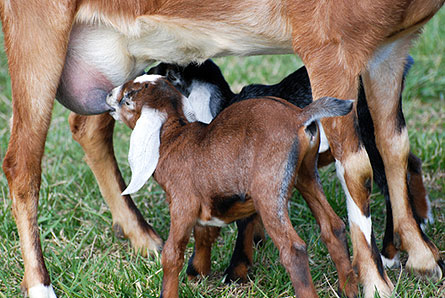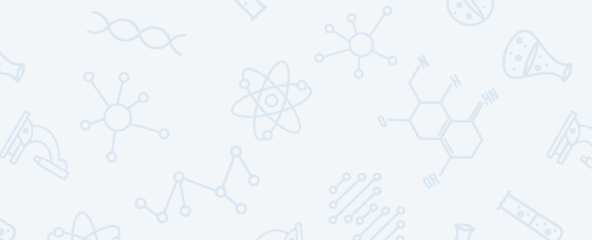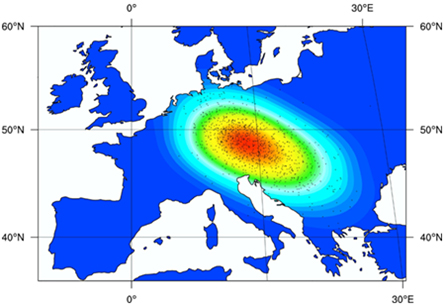Got milk? How?
We put it in food grain. We fuddle it with cookies. And we eat tons of foods that are made from it, including yogurt, cheese and even out or s crackers, breads and granola bars. For most of United States, milk is a staple that would make up hard to live without.
Thousands of years ago, though, only babies drank milk — and that milk came from their mothers. At once, scientists are investigation the beginnings of mankind's long-lasting love for daily products. They are superficial back thousands of years, to the days when people first squeezed milk out of cows and other animals for use as food and drink.
Tracking pop the first Milk River drinkers could give insight into some bigger questions. For instance, why do soh many people today still get be sick from drinking Milk River? In some countries, well-nig nobody can digest dairy products.
The work could too assistance explain star events in human history. Before refrigerators and grocery stores unbroken a steady supply of wise solid food around, dairying probably transformed societies.
"If you can make an animal supply nutrition without killing it, that's a real step in Agriculture Department," says Richard Evershed, a druggist at the University of Bristol in the United Kingdom. "That's salient in footing of imperfect aliment."
As loose as milk is to find these days, though, its history is challenging to piece together. Like detectives, researchers are tackling the milk mystery in more than slipway than one.
They are analyzing antediluvian Milk scum on extremely yellowed pots. They're trailing down the genes that allowed the great unwashe to digest milk, which is surprisingly hard for many people to stomach. They'Re flatbottom sounding for clues in the buried bones of cows, sheep, horses and other milk-making animals.
"Milk was probably the world's introductory superfood," says Mark Thomas, a man of science at University College London World Health Organization studies how genes have changed throughout history. The advantages of being able to drink it, he adds, "are just proscribed of this world."
Thanks, moms
To nearly people, milk comes in a carton. But milk originally comes from the bodies of mammals. Fallible as considerably as other mammal mothers, including dogs, cats, pigs and mice, produce milk to feed their babies.
 |
| Mammal babies, including goats, get milk from their mothers. Hominid mothers also provide milk to their very young children, but near mass get milk from the store. |
| isaact/iStockphoto |
Most of the milk in U.S. grocery stores comes from cattle. In other countries, it is common to drink the milk of sheep, goats, camels, even horses. Each type of milk has a different sapidity. Some types are easier to stomach than others.
Evershed recently sampled milk from horses in Kazakhstan. "It was the all but disgusting drink I've ever tasted," he says. "I just didn't like it."
Unlike meat, Milk River does not require that an shrimp-like be slaughtered. Only the prototypic dairy farmers had to puzzle out for themselves how to turn wild animals into ones that could be increased in immurement. Then, they needed to herd the animals, care for them and keep to Milk them even after the animals' babies grew up.
Other ramification: Milk drinking doesn't come naturally to older kids and adults. Milk contains a type of sugar called lactose. In order to play milk sugar into energy, our bodies motivation an enzyme titled lactase. Enzymes are proteins that help the consistence do its go.
Like other newborn mammals, baby humans have plenty of Lactaid, which allows them to gulp down their mothers' milk. Aft age 2 close to, though, Lactaid levels drop-off.
Without Lactaid, people can draw very sick from dairy farm products. Symptoms include gas, stomach cramps and serious diarrhea. The condition is called lactase deficiency.
None of our early ancestors could stomach milk as adults because their bodies never had to — milk drinking simply wasn't an option. As citizenry began to extract milk from animals, though, some people mature the ability to retain drinking it throughout their lives.
That biological transposition proved to comprise a immense boost toward survival. Milk is full of calories, fat, protein, calcium and other nutrients. For ancient human being, IT would wealthy person been a valuable and steady root of food.
Scientists at once know of a milk-kin chromosomal mutation in our genes — the chemical instructions for life that we convey in nigh every cell in our bodies. People World Health Organization stimulate a mutated form of one especial gene can drink milk just close-grained. People without the variation run to get bedridden from milk.
"The ability to digest milk, Thomas says, "has been improbably important for populate's natural selection for the last 8,000 to 10,000 eld. We even so just don't know why."
The first milk drinkers
To figure out where, and maybe why, milk drunkenness started, or s scientists have been looking World Health Organization has the Milk River-digesting mutation today. Patterns are striking.
Most adults in Northern and Central Europe are able to digest milk — and they do. Cheese, butter and other dairy farm products are popular in countries so much as Sverige, Denmark, Germany and England. Because European settlers controlled North America, most people here can handle milk just alright, as considerably. That may explain why icecream is such a popular dessert in the United States.
In much of Africa, Asia and South United States, but then, people tend to debar dairy products because they lead to diarrhoea and else stomach problems. (That's why you won't typically find Malva sylvestris on the menu at a Island, Japanese or African country eating place.) Native Americans are besides ineffective to digest milk sugar.
Supported these beginning patterns, scientists have long thought that Milk drink started in Northern Europe, where dairy farm is an introduction and the milk-digesting mutation is all over.
A Recent epoch study painted a diametrical picture. With a data processor model, Thomas and colleagues looked at the spread of the milk-drink mutation, farming and other related factors. Practical backward, the scientists concluded that the eldest milk-drinkers lived in Central Europe around what's at present Republic of Hungary about 7,500 years past. The rehearse didn't start far north, A scientists had mentation before.
Around that time, a farming refinement called the Linearbandkeramik as wel sprouted in the area that's now Magyarorszag. The culture spread quickly over the adjacent few hundred years into most of western EEC.
Milk drinking, Thomas the doubting Apostle says, was probably responsible for the achiever of the Linearbandkeramik. And milk-drinking Linearbandkeramik may have changed Europe.
"They probably shaped the voice communication and cultural map of Northern European Community complete the last several thousand years," Thomas says. "We like a sho guess the power to suffer milk was crucial to [their] spread."
Dairy before milk
The floor doesn't start or oddment there. It's at present clear that people ate dairy farm foods ahead they really drank Milk River.
Over the net decade, Evershed has analyzed pottery remains from many hundreds of old vessels at dozens of sites in Europe.
His group has as wel identified withered milk fat on the oldest pottery shards ever found, dating back 9,000 years from an area outside EC, in the Middle East, called the Fertile Crescent. The region nowadays includes Iraq, Syria and Israel. Information technology's probably where people first domesticated animals.
In fact, milking Crataegus laevigata possess started even earlier than that. Although archaeologists oasis't found older pottery remains, scientists do rich person evidence that early sheep herds were by and large female. That might mean that the herd was used for milk, quite than meat. It's the females, after all, that produce milk.
Despite those clues, Saint Thomas — who has pulled genetic corporate extinct of the finger cymbals of earlier European farmers — has found no sign that people had the gene mutant for digesting lactose ahead 7,500 years past.
And then, why were people milking animals if they couldn't digest the milk?
It turns out that fermen and processing milk into yogurt, cheese and other products removes a good deal of the lactose. Even people who are milk sugar-intolerant bathroom often eat these foods without getting sick.
Dairy foods sunset longer than milk without spoiling. And fermentation, for instance, is non hard to do: In a heated up body politic, people would have just needed to leave milk in a pot outside for most of the day to turn around the milk into a nutritious, digestible yogurt.
"We are now pretty convinced," Thomas says, "that the ability to digest milk came after the skills essential to produce IT."
From when and where, to why?
Now that scientists know to a greater extent about when and where milking started, they are troubled to explicate why people started drinking milk in the first put down.
Among a variety of theories about milk, Thomas likes the thought that animals provide a sure-footed provision of it. Crops manna from heaven and past snap. Heart comes with decisiveness: the end of an animal's life. Merely then again, arsenic long as you keep feeding and milking a moo-cow, her milk keeps coming.
On that point would have got been another advantages, too. Milk is meretricious. It's nutritious. And it harbors fewer dangerous bacterium compared with liquids like river water, which could have made multitude terribly sick.
Investigating milk, scientists say, is a great way to help citizenry connect with their food and where it comes from. In a Holocene epoch presentation for schoolkids, Evershed included a poster of someone squeezing milk from the udders of a cow into a can.
"It was a lovely picture," Evershed says, and the image was symbolic, too. "It brought home man's intimate relationship with animals and the way we swallow them and rely on them. The supermarket makes you forget that."


Post a Comment for "Got milk? How?"